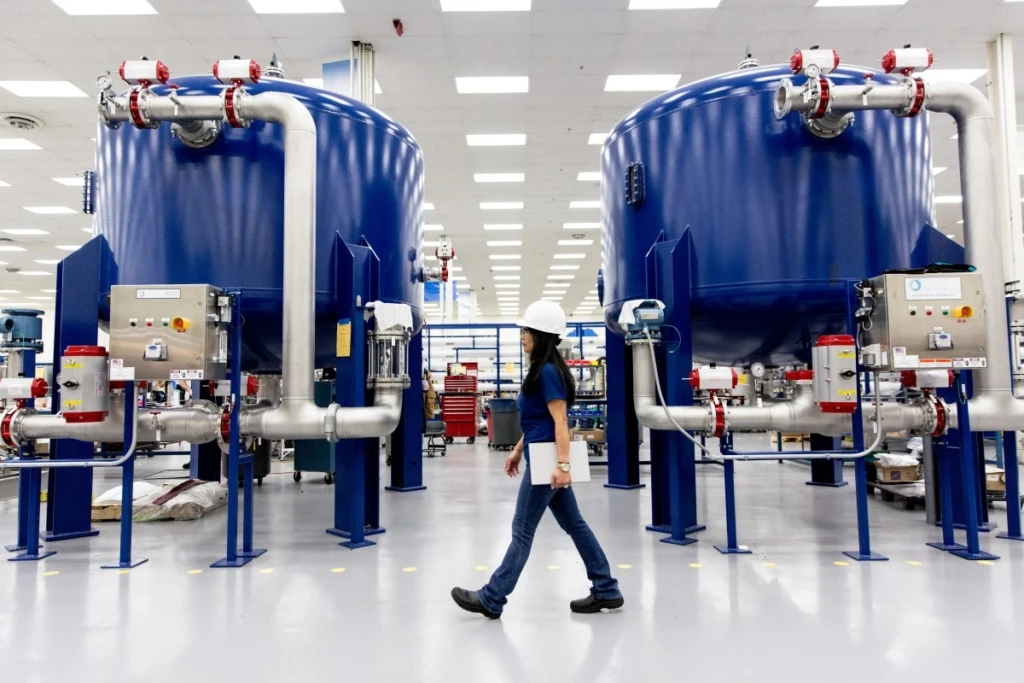
3 ways Microsoft accelerates R&D for semiconductor manufacturers

The first quarter of 2021 has seen an unprecedented supply crunch for semiconductors. These tiny electronic workhorses – invaluable in everything from computers and cars to cash registers and kitchen appliances – have become almost impossible for some industry sectors to find. Wait times after an order is placed have soared to 15 and even 22 weeks, up from 12 weeks in early 2020.1 The semiconductor supply crunch has spurred nations across the globe to invest billions of dollars into semiconductors as they race to become more self-reliant.2
Microsoft Cloud for Manufacturing is committed to helping silicon manufacturers meet the current challenge and thrive in the future. We understand that a critical need for semiconductor manufacturers is that their R&D process must foster genuine innovation. New products give companies a competitive edge, helps them attract new customers, and grow market share and revenue.
Here are three ways Microsoft helps silicon manufacturers develop more effective R&D.
1. Scalable silicon design
Silicon design depends on complex tools and a high-performance compute farm, which includes high-throughput NFS storage and dedicated network architectures.
By providing flexible access to resources with scale and variety, our customers can choose to expand or contract the queue by scaling on-demand and mapping workloads to the right VM configurations. This allows rapid turns of key stages in the chip design flow.
Microsoft Azure makes it easy to burst, go hybrid, or migrate workloads to the cloud, by simplifying the integration of existing on-prem configurations, by providing connectors for industry-standard scheduling tools like LSF, UGE, Altair and others, and NFS storage solutions from NetApp and others, which offer low latency, high throughput, and IOPS required for the most challenging chip design workloads.
Azure services and tools can also help optimize the design and collaboration environments used in EDA (Electronic Design Automation) workflows, so teams work efficiently. Azure also offers mechanisms to help organizations choose the right combination of performance and cost for their workloads.
From a cloud-computing perspective, the security, reliability, performance, and scalability that Azure offers as an HPC platform is a natural fit for EDA. Plus, Azure is always evolving, which allows customers to adopt the latest technologies the market can provide.
2. Secure collaboration environment
Microsoft is developing a secure collaboration workbench to meet industry needs for a secure, scalable, high-performance design environment.
This workbench provides an intelligent, fully managed silicon design environment that provides multilayered security and access controls, along with the ability to use Azure at scale as needed.
Its key benefits include a scalable and resilient compute platform that is tuned for high-performance silicon design workloads; a trusted environment for sharing and co-designing IP among various design teams; and enhanced security and privacy using unique identity management and access control solutions.
3. Building a secure and resilient supply chain
At a high level, semiconductor supply chains include research and development, design, production, and distribution.
This complex supply chain leads manufacturers to secure it all the way to the silicon. As an example, to sustain leadership in microelectronics, the United States government is asking suppliers to comply with the stringent supply chain requirements for defense and critical infrastructure through Rapid Assured Microelectronics Prototypes (RAMP) using Advanced Commercial Capabilities Project.
RAMP is a critical initiative focused on securing the US domestic supply chain for components used in the defense industry, along with other mission-critical systems that require the utmost safeguards.
In addition, advanced analytics and machine learning are critical to streamlining and optimizing semiconductor manufacturing and testing. Foundries and IDMs as well as fabless companies are all seeking to automate these procedures to the greatest extent possible.
We are working on ways to speed time to market and provide greater ROI for semiconductor manufacturers. With Microsoft HoloLens, manufacturing technicians can walk through holographic step-by-step guided experiences to help them complete complex tasks faster and more accurately.
Microsoft also is developing an integrated Digital Manufacturing Technician solution that integrates AR, IoT, and a clean-room compliant device that will provide training, task execution, and real-time data available when and where needed.
Lack of visibility, item-level traceability, and predictability has plagued supply chain operations, even for the companies with the most advanced supply chain management in the world. This leads to overspending, errors, risks of fraud, security cyberattacks, counterfeits, use of conflict minerals, and more. Azure Supply Chain is deploying Microsoft’s blockchain platform in addressing those challenges and has already uncovered tens of millions of dollars in hidden costs, improved end-to-end item level traceability, reduced cycle time, and expanded margins by digitizing items in a shared data structure.
Meet the challenge of better semiconductor R&D
Shorter product refresh cycles, frequent evolution of standards, and the constant need for more performance are compressing the design cycle and time to market. Designs are growing more complex, and organizations need better design flows and comprehensive validation at every stage of development.
Microsoft is the right solution for silicon design. We are focusing on the tools and technologies that are already being used successfully by some of our biggest customers in the semiconductor industry.
Learn more about Azure for the Semiconductor Industry.
Stay informed about Microsoft Cloud for Manufacturing to learn how you can help manufacture a more resilient and sustainable future.
Follow Microsoft Manufacturing on social and visit our Microsoft Cloud for Manufacturing website to get the latest on how Microsoft and our partners are helping manufacturers create a more resilient and sustainable future.
1- How a Chip Shortage Snarled Everything from Phones to Cars, Bloomberg, March 28, 2021
2- Semiconductors: Nations deploy wartime-like efforts to win chip race (cnbc.com)




